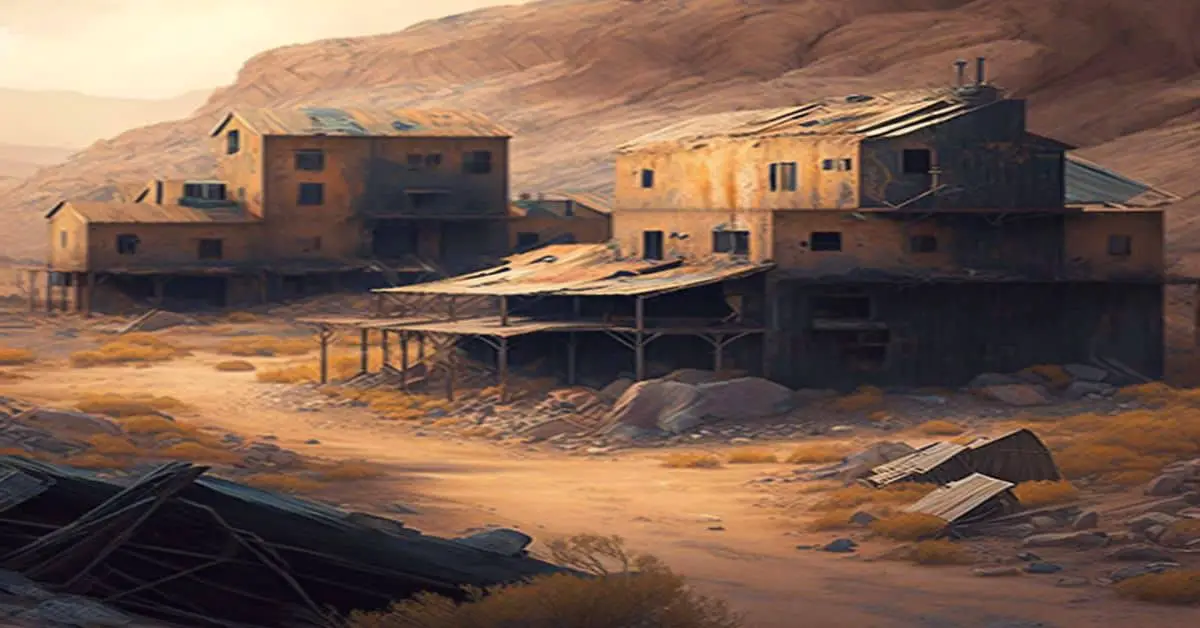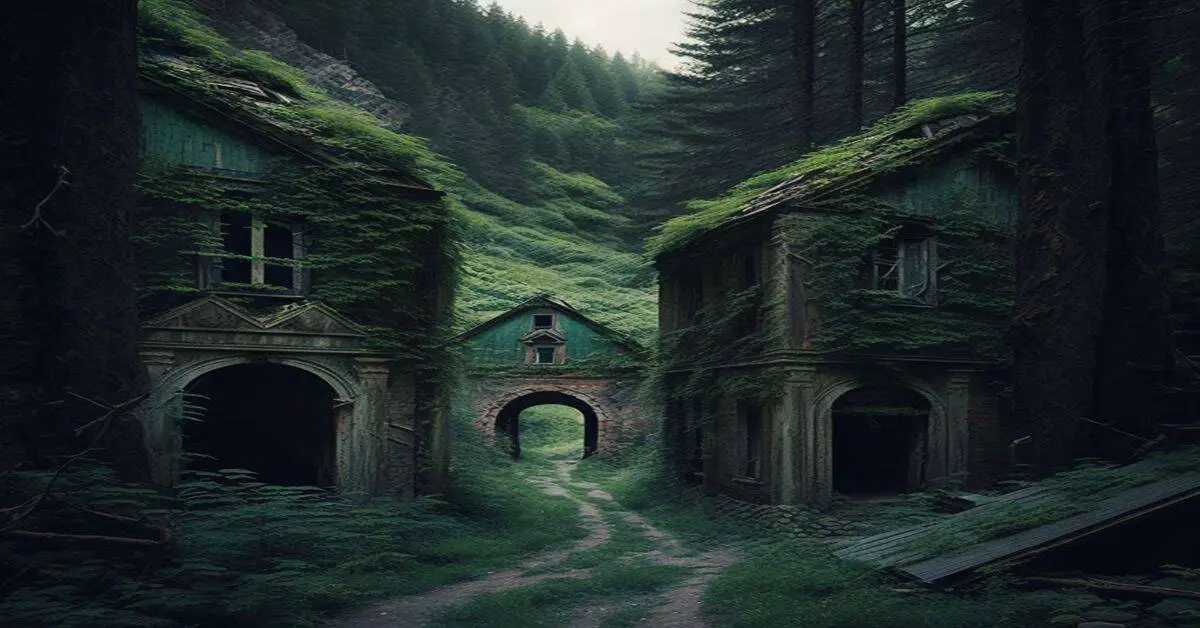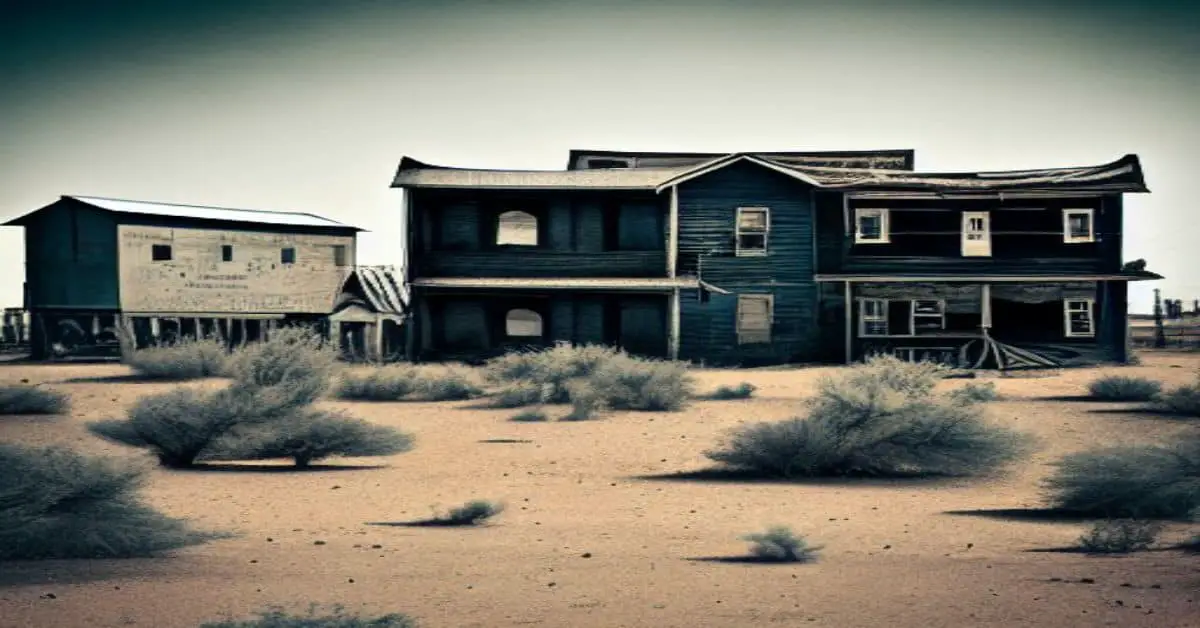The American West is known for its rich history and the impact of the gold rush on the region during the late 1800s. One such place that bears testimony to this era is Lincoln City, a ghost town in Colorado. Once a bustling community of over 1500 people with two hotels and many buildings, today, little remains of Lincoln City, making it a fascinating destination for anyone interested in exploring the history of the American West.
The town’s fame came from discovering pure gold, with one rumored nugget weighing 14 pounds. The gold rush brought in people from all over the country, hoping to strike it rich. The town’s prosperity was short-lived, and by the early 1900s, the gold was depleted, and the town was abandoned.
Discovering the Ghost Town of Lincoln City takes you on a journey to the heyday of the late 1800s, providing a glimpse into the lives of the people who once called this place home and the impact of the gold rush on the region.
Key Takeaways
- Lincoln City, Colorado, was a thriving community during the late 1800s due to the gold rush and the discovery of pure gold.
- The town’s fame attracted people from all over the country hoping to strike it rich, but by the early 1900s, the gold was depleted, and the town was abandoned.
- Visitors to the area can explore the remnants of the town, such as the old mine shafts and ruins of buildings, as well as nearby Farncomb Hill hike and Breckenridge Ski Resort.
- Preservation efforts are being made to maintain what little is left of Lincoln City, which remains an important part of Colorado’s history.
Location and History
The location and history of Lincoln City are noteworthy. Once a thriving mining town with a population of over 1500 people and two hotels in the 1880s, it is now situated 4 miles east of Breckenridge, Colorado and was known for its pure gold deposits. Visitors to the area can explore the remnants of the town, such as the old mine shafts and the ruins of buildings that once stood.
The nearby Farncomb Hill hike offers stunning views of the mountains and is a popular attraction for those interested in the area’s history. In addition to hiking, visitors can also explore the nearby Breckenridge Ski Resort and experience the beautiful scenery of the Rocky Mountains.
Breckenridge is also worth visiting, as it offers a glimpse into the area’s history with its Victorian architecture and museums dedicated to the mining era. Overall, the location and history of Lincoln City, Colorado, provide a unique opportunity for visitors to explore the past and present of this once-thriving mining town and the surrounding area.
Gold Rush and World’s Fair
During the Gold Rush, Farncomb Hillgold was discovered in what is now known as Lincoln City. The gold was found in a pure state and one nugget was rumored to weigh 14 pounds. The discovery of this gold led to the establishment of Lincoln City and attracted many people who were hoping to strike it rich.
As the town grew, two hotels were built along with many other buildings. The gold was so valuable that it was sent to the World’s Fair Exposition as an example of the wealth that could be found in the area.
Today, there are very few remains left of Lincoln City. However, the memories of the Gold Rush and World’s Fair artifacts serve as reminders of the town’s once-prosperous past. The discovery of Farncomb Hillgold may have been the main reason for the town’s existence, but it also represents an important part of American history.
The legacy of Lincoln City continues to live on through the stories of the people who once lived there and the artifacts that remain.
Current State and Remains
Today, the remains of the once prosperous Colorado town established due to the discovery of Farncomb Hillgold are scarce. Abandoned buildings and structures are the only remnants of a once-thriving community boasting over 1500 people.
The town’s decline began when the gold played out, and people moved away seeking other opportunities. Over time, the town became a ghost town, with only a few buildings left as a testament to its past.
Despite the dwindling remains of the town, preservation efforts are being made to maintain what little is left of Lincoln City. The remaining structures are a vital part of Colorado’s history, and the few visitors who come here are often moved by the quiet and peacefulness that pervades the area.
While the town may not be as bustling as it was in the 1880s, its remnants remind of a time when gold was king, and people flocked to the mountains in search of riches. As such, Lincoln City remains an important part of Colorado’s history that deserves to be preserved for future generations.
Frequently Asked Questions
Are there any ghost stories or legends associated with Lincoln City, Colorado?
Lincoln City’s history lacks ghostly sightings, supernatural events, or spooky legends. No recorded paranormal investigation or local folklore is associated with the town’s haunted history.
What was the daily life of the residents like in Lincoln City during its heyday?
During the heyday of Lincoln City, residents likely had daily routines centered around mining and other industry work. Social interactions may have included gatherings at hotels and other public spaces, community events, and celebrations.
Were there any notable residents or figures in Lincoln City’s history?
Notable figures from Lincoln City’s history are largely unknown due to the lack of surviving records and the town’s early decline. However, the discovery of gold and producing a 14-pound nugget were significant events in the town’s history.
What efforts have been made to preserve any remaining structures or artifacts from Lincoln City’s past?
Preservation efforts in Lincoln City are minimal due to the town’s near-total disappearance after the gold played out. Any remaining historical artifacts are likely to be found in local museums rather than on the original site.
Are there any plans for further exploration or excavation of the area to uncover more of its history?
Future plans for further exploration and excavation of Lincoln City are uncertain due to limited funding opportunities. However, there have been occasional small-scale efforts to uncover more of the town’s history.


